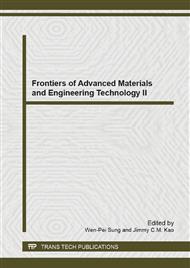p.1826
p.1830
p.1834
p.1838
p.1842
p.1847
p.1851
p.1855
p.1859
Unascertained-Information-Based Calculation for the Permissible Input of Total Phosphorus in Poyang Lakes
Abstract:
The water environment is a system with many uncertainties and requires doing research by the method of uncertainty. Based on the dynamics of river hydrology and water quality, the uncertainty and incompleteness characteristics of monitoring information and frequency, each parameter in the model of Dillion is managed by using the theory of Unascertained Mathematics and unascertained expected value. This paper probes into the study of the permissible input of total phosphorus of Poyang Lake in Jiangxi and the credible level calculation. With this method, not only can the unascertained expected value of the permissible input of total phosphorus be calculated, its subjective reliability can also be obtained on the basis of the rules of four fundamental operations of unascertained.
Info:
Periodical:
Pages:
1842-1846
Citation:
Online since:
April 2014
Authors:
Price:
Сopyright:
© 2014 Trans Tech Publications Ltd. All Rights Reserved
Share:
Citation:


